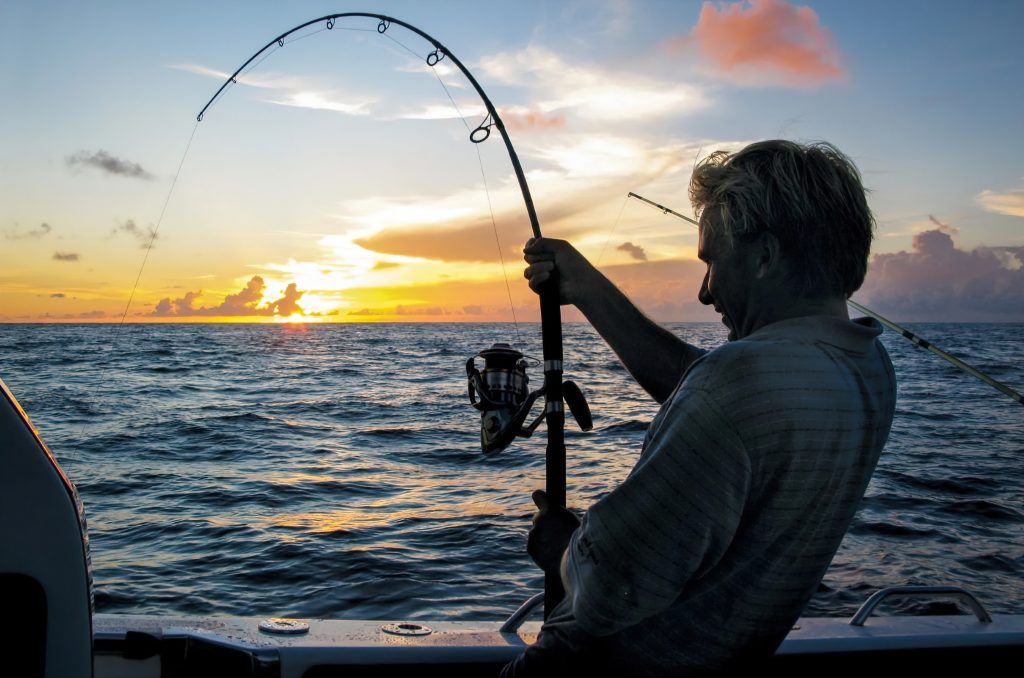Bottom fishing is a popular and effective technique among both amateur and professional anglers, targeting species that dwell near the seafloor. The method allows for precise bait placement and presentation, increasing the likelihood of a successful catch. This article provides an in-depth look at the gear, bait, and techniques required for mastering bottom fishing, ensuring a successful and rewarding trip.
- Understanding the Basics of Bottom Fishing Gear and Equipment
- Choosing the Right Bait and Lures for Bottom Fishing
- Techniques for Finding the Best Bottom Fishing Spots
- How to Rig and Set Up Your Bottom Fishing Tackle
- Bottom Fishing Tips and Tricks for Different Fish Species
- Reading the Water and Adjusting Your Techniques
- Safety Tips for Bottom Fishing
- Mastering Bottom Fishing for a Successful Trip
- Embracing Technology to Enhance Bottom Fishing Success
- Adapting to Different Fishing Environments
- Expanding Your Bottom Fishing Species Range
Understanding the Basics of Bottom Fishing Gear and Equipment
Selecting the right gear is crucial for successful bottom fishing. Key components include:
- Rods: Choose a sturdy, medium to heavy action rod, typically 6-7 feet in length. This ensures the strength and sensitivity needed for bottom fishing.
- Reels: A conventional reel with a strong drag system is ideal for handling the weight and resistance of bottom fishing.
- Line: Braided lines are popular for their strength, sensitivity, and minimal stretch. Opt for a 30-80 lb test line, depending on the target species and conditions.
- Terminal Tackle: Consider using sinkers, swivels, and leaders appropriate for the size of the fish you are targeting.
Choosing the Right Bait and Lures for Bottom Fishing
Live and cut bait are often the most effective for bottom fishing. Popular choices include squid, shrimp, and fish such as mackerel, herring, or bunker. Artificial lures like jigs, soft plastics, and deep-diving plugs can also be used, mimicking the movement and appearance of natural prey.
Techniques for Finding the Best Bottom Fishing Spots
- Research: Utilize nautical charts, fishing reports, and online resources to identify potential bottom fishing locations.
- Sonar: Use a fish finder or depth sounder to locate underwater structures and fish-holding areas.
- Look for structure: Target areas with a rocky bottom, wrecks, or other underwater features that attract fish.
How to Rig and Set Up Your Bottom Fishing Tackle
- Rigging: Popular bottom fishing rigs include the fish finder rig, the Carolina rig, and the dropper loop rig. Each rig has its advantages, so choose the one that best suits your target species and conditions.
- Sinker weight: Select a sinker weight that allows your bait to reach the bottom but still drift naturally with the current.
- Leader length: Use a leader length of 18-36 inches, adjusting as needed based on the species you are targeting and the water conditions.
Bottom Fishing Tips and Tricks for Different Fish Species
Adjust your bait and presentation based on the target species’ feeding habits and preferences.
Observe the fish’s behavior and react accordingly. Some fish may be more aggressive, while others may require a more subtle approach.
Experiment with different rigs, bait, and techniques to determine which works best for your target species.
Reading the Water and Adjusting Your Techniques
Pay attention to the tide, current, and water temperature, as these factors impact fish behavior and location.
Adjust your bait and presentation based on the water conditions and fish activity.
Be prepared to change tactics if the fish are not responding to your initial approach.
Safety Tips for Bottom Fishing
Monitor the weather and sea conditions before and during your trip.
Be aware of your surroundings, including other vessels and potential hazards.
Wear appropriate safety gear, such as a life jacket and proper footwear.
Mastering Bottom Fishing for a Successful Trip
Bottom fishing is an exciting and rewarding technique that can lead to impressive catches when executed correctly. By understanding the necessary gear, bait, and techniques, and adapting to various species and conditions, you can become a bottom fishing master. Stay patient, persistent, and open to learning from each fishing trip to improve your skills.
Embracing Technology to Enhance Bottom Fishing Success
Modern technology can significantly improve your bottom fishing experience. Consider the following tools to optimize your chances of success:
- GPS and Chartplotter: Invest in a GPS/chartplotter to accurately mark and revisit productive fishing spots.
- Sonar/Depth Sounder: A quality sonar/depth sounder allows you to visualize the underwater environment and locate fish more effectively.
- Fishing Apps: Utilize fishing apps for real-time weather updates, tide charts, and to connect with other anglers for tips and advice.
Adapting to Different Fishing Environments
Bottom fishing can be successfully employed in various environments, from shallow inshore waters to deep offshore depths. Each situation requires adjustments to your tactics and gear:
- Inshore Bottom Fishing: Lighter tackle and smaller bait are typically used when targeting inshore species, such as flounder or redfish.
- Offshore Bottom Fishing: Heavier tackle, larger bait, and specialized rigs are needed when targeting offshore species like grouper, snapper, or halibut.
- Deep-Drop Bottom Fishing: Electric reels, heavy-duty tackle, and specialized rigs are required when targeting deep-dwelling species in depths of 300-1,000 feet or more.
Expanding Your Bottom Fishing Species Range
Bottom fishing targets a wide variety of species, offering the opportunity to expand your angling horizons:
Experiment with different baits and techniques to target species you haven’t caught before.
Research local fishing regulations and species-specific seasons to ensure responsible and sustainable fishing practices.
Connect with experienced anglers or hire a fishing guide to learn species-specific tactics and tricks.
In summary, mastering the art of bottom fishing requires a solid understanding of the essential gear, bait, and techniques involved. By remaining adaptable to different fishing environments, species, and conditions, you can increase your success rate and become a versatile and accomplished bottom angler. Stay committed to learning and refining your skills, and you’ll reap the rewards of exciting and memorable fishing experiences.

